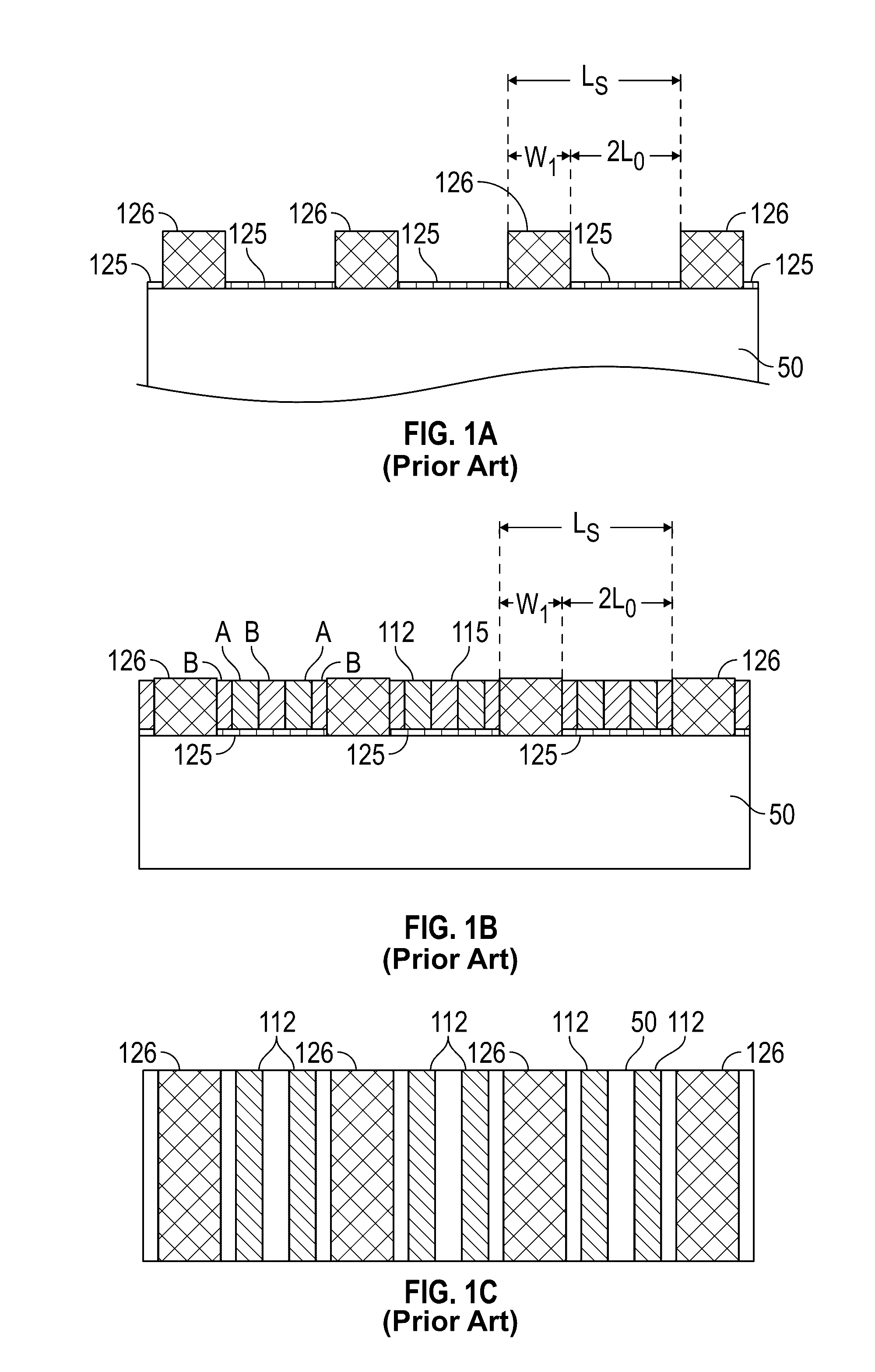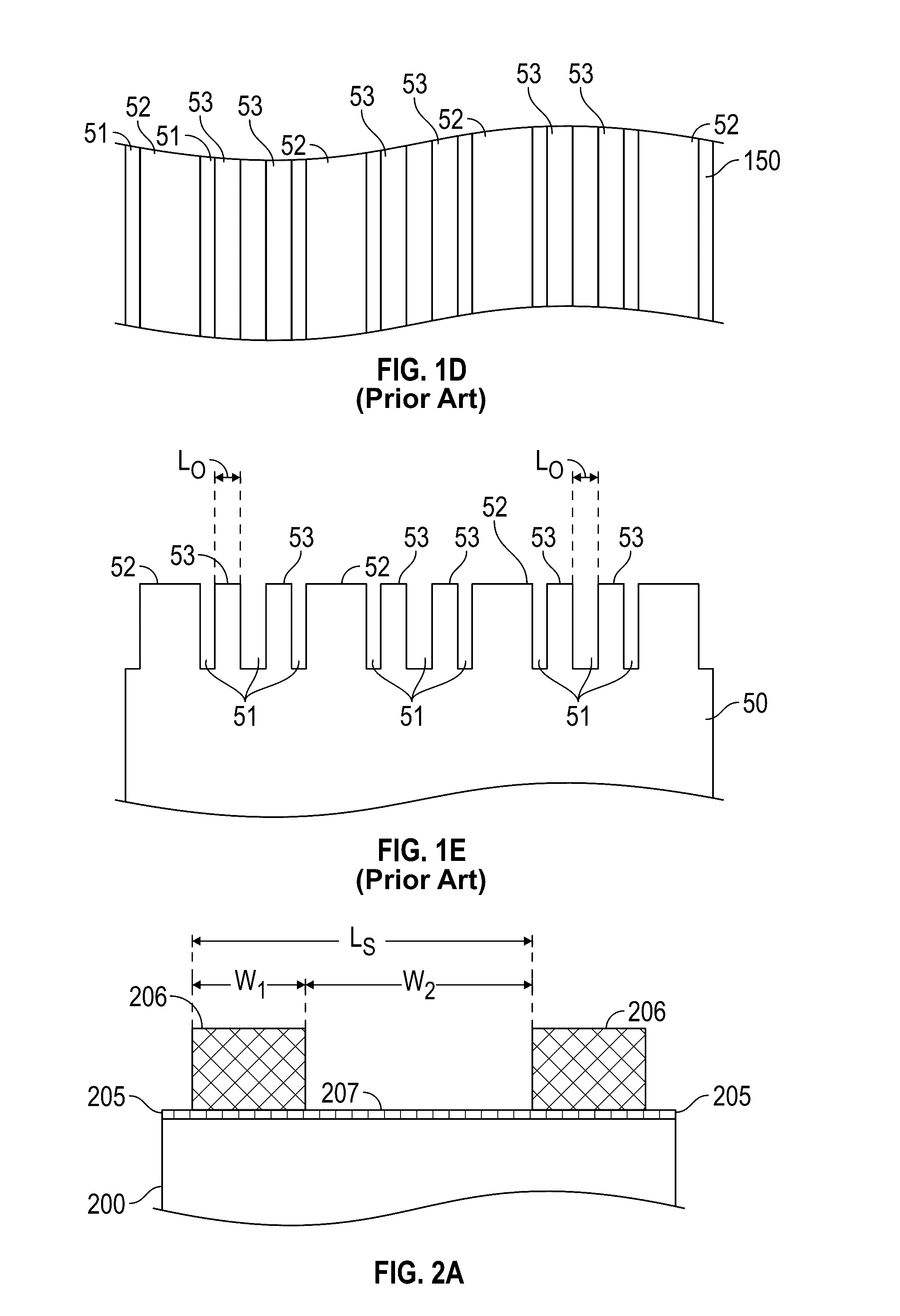Method for directed self-assembly (DSA) of a block copolymer (BCP) using a topographic pattern
- Summary
- Abstract
- Description
- Claims
- Application Information
AI Technical Summary
Benefits of technology
Problems solved by technology
Method used
Image
Examples
first embodiment
[0026]Embodiments of the method of this invention use intermediate steps between formation of the topographic pattern and deposition of the BCP and thus replace the prior art method illustrated and described above with respect to FIGS. 1A-1E. the invention is illustrated in FIGS. 2A-2H for an example where the BCP is poly(styrene-block-methyl methacrylate) (PS-b-PMMA) with L0=27 nm.
[0027]FIG. 2A is a perspective view of a substrate 200 with a patterned sublayer 205 that acts as a topographic pattern. The substrate 200 may be formed of any suitable material, such as, but not limited to, silicon-on-insulator (SOI), single-crystal Si, amorphous Si, silica, fused quartz, silicon nitride, carbon, tantalum, molybdenum, chromium, alumina and sapphire. The substrate may also be an intermediate layer formed on a semiconductor wafer or SOI base, such as an amorphous carbon layer or a silicon nitride (SiN) layer. The previously-cited Tsai et al. article describes the use of DSA to form a BCP p...
second embodiment
[0038]the invention is illustrated in FIGS. 3A-3H for an example where the BCP is poly(styrene-block-methyl methacrylate) (PS-b-PMMA) with L0=27 nm. Referring to FIG. 3A, a layer 305 of material with a thickness of 5-15 nm is formed on substrate 200. The material for layer 305 may be any of the materials used for stripes 206, but is preferably a neutral PS-r-PMMA mat. Then, in FIG. 3B an e-beam resist or photoresist layer is deposited on the layer 305 and e-beam lithography or photolithography is utilized to generate grating patterns of resist stripes 304 with a stripe pitch Ls=(m+n)L0. The resist pattern is then exposed to oxygen plasma etching so that the exposed portions of layer 305 are etched away, leaving stripes 306. This also oxidizes the sidewalls of the stripes 306. The remaining resist pattern is rinsed away in a suitable solvent (e.g., toluene, PGMA, or NMP), leaving the structure as shown in FIG. 3C with stripes 306 with a stripe pitch Ls=(m+n)L0. The width of the resul...
PUM
 Login to View More
Login to View More Abstract
Description
Claims
Application Information
 Login to View More
Login to View More - R&D
- Intellectual Property
- Life Sciences
- Materials
- Tech Scout
- Unparalleled Data Quality
- Higher Quality Content
- 60% Fewer Hallucinations
Browse by: Latest US Patents, China's latest patents, Technical Efficacy Thesaurus, Application Domain, Technology Topic, Popular Technical Reports.
© 2025 PatSnap. All rights reserved.Legal|Privacy policy|Modern Slavery Act Transparency Statement|Sitemap|About US| Contact US: help@patsnap.com



